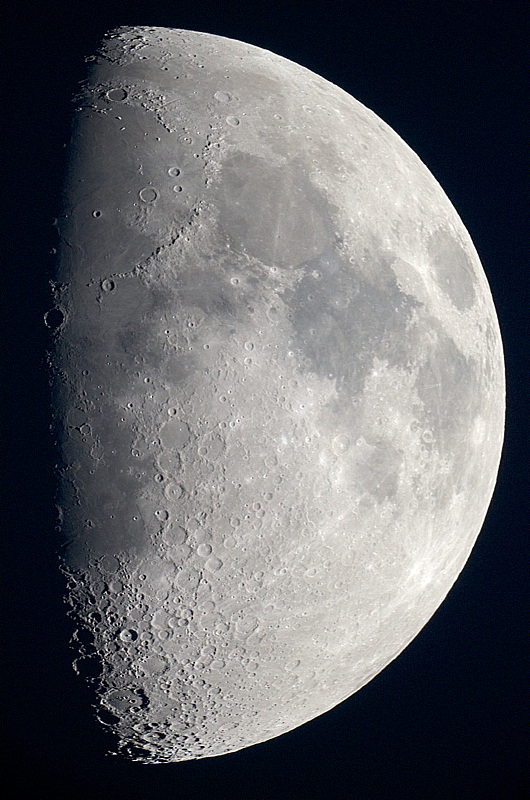
Lunar Crater Fontenelle, Barnard's Star
Posted: 5 August 2014
The monsoon weather pattern returned following my previous session on 21 July. Received 0.46" of much needed rain in less than one hour on Friday, 25 July. At sunset on Saturday, 26 July, had some nice mammatus clouds to the northeast:

Cloudy days and nights and a trip kept me from the observatory until Monday, 4 August, when I was able to get in a short session.
|
Opened: Monday, 4 August 2014, 1859 MST Temperature: 95°F |
Session: 707 Conditions: Mostly clear |
The observatory clock had locked up during my absence. Got it working again. This is the second time in recent weeks that this has happened. May have to look for a new digital clock with six digits (HH:MM:SS) with red numerals.
1912 MST: viewed the near First Quarter moon, 83X. Sure was nice to be back in the observatory! Did some lunar touring, 222X. Seeing was not very good but the view of crater Fontenelle on the northern portion of the terminator was very nice. The crater rim was illuminated but the floor and surrounding area were dark, making the rim stand out as a brightly illuminated ring.
1922 MST: sunset. Set up for lunar imaging with the D7000 DSLR at prime focus of the 8" LX200-ACF. This is a 1/320sec, ISO 640, exposure:

Crater Fontenelle is to the upper left of the crater Plato near the northern limb. This cropped image, prime focus + 2X PowerMate, 1/320sec, ISO 3200, shows the illuminated crater rim:

1941 MST: viewed Mars, 83X. No details visible. Tried 222X, but seeing was pretty bad. No details visible.
View Saturn, 222X. Although seeing wasn't great, the Ring, Cassini Division, shadows, and four moons were visible. One cloud band on the planet was faintly visible.
2000 MST, powered on the GC Wi-Fi Adapter and used SkySafari Pro on the iPhone 5s to GOTO Barnard's Star. Using 83X I was able to ID the star using SkySafari Pro on the iPhone. Began setting up to image it and compare the resulting image to one I did on 28 July 2013 image. Added the focal reducer and mounted the D7000 DSLR at prime focus.
2011 MST: more clouds were now coming in the east. Did a focus test image using the star Antares with the Bahtinov Mask.
2021 MST: took a 30 second, ISO 4000, unguided exposure of Barnard's Star. During post-processing I used SkySafari Pro for Mac OS X to ID the position of Barnard's Star on the image. Here are the two images about one year apart, cropped to approximately the same size:


I merged the two images and tried to detect any proper motion in Barnard's Star. Unfortunately, at the scale of the images, no motion was detected.
I then began closing up. It had been a long day (driving back home from Albuquerque, NM).
|
Closed: Monday, 4 August 2014, 2040 MST Temperature: 80°F |
|
On 25 July a new Nav Button was added to the Site: "Reviews". The Reviews page shows some product reviews I have written. The Links page was reorganized to remove the review articles that were on the page. I hope these changes prove useful to visitors.
Comments are welcome using Email. If you are on Twitter you can use the button below to tweet this report to your followers. Thanks.
Cassiopeia Observatory Home Page